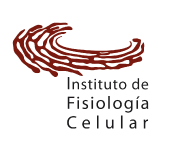Protein Serine/Threonine Phosphatase Type 2C of Leishmania mexicana
Escalona-Montaño, A. R., Zuñiga-Fabián, M., Cabrera, N., Mondragón-Flores, R., Gómez-Sandoval, J. N., Rojas-Bernabé, A., ? Aguirre-García, M. M. (2021). Protein Serine/Threonine Phosphatase Type 2C of Leishmania mexicana. Frontiers in Cellular and Infection Microbiology, 11. doi:10.3389/fcimb.2021.641356
Protein phosphorylation and dephosphorylation are increasingly recognized as important processes for regulating multiple physiological mechanisms. Phosphorylation is carried out by protein kinases and dephosphorylation by protein phosphatases. Phosphoprotein phosphatases (PPPs), one of three families of protein serine/threonine phosphatases, have great structural diversity and are involved in regulating many cell functions. PP2C, a type of PPP, is found in , a dimorphic protozoan parasite and the causal agent of leishmaniasis. The aim of this study was to clone, purify, biochemically characterize and quantify the expression of PP2C in (PP2C). Recombinant PP2C dephosphorylated a specific threonine (with optimal activity at pH 8) in the presence of the manganese divalent cation (Mn). PP2C activity was inhibited by sanguinarine (a specific inhibitor) but was unaffected by protein tyrosine phosphatase inhibitors. Western blot analysis indicated that anti-PP2C antibodies recognized a molecule of 45.2 kDa. Transmission electron microscopy with immunodetection localized PP2C in the flagellar pocket and flagellum of promastigotes but showed poor staining in amastigotes. Interestingly, PP2C belongs to the ortholog group OG6_142542, which contains only protozoa of the family Trypanosomatidae. This suggests a specific function of the enzyme in the flagellar pocket of these microorganisms.




